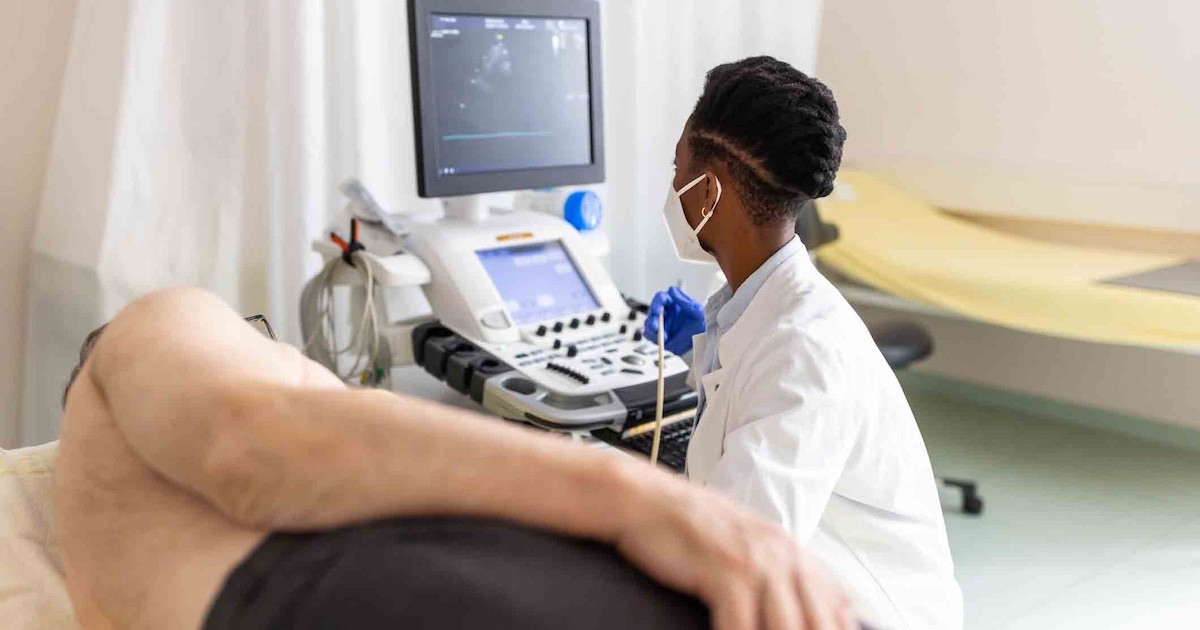 By Russell Fox, Communications Practice, Mintz Levin
By Russell Fox, Communications Practice, Mintz Levin
Wireless technology has long been a part of medical devices. The recent introduction of more sophisticated wireless phones and the deployment of wireless broadband networks has sparked the development of new "mHealth" (mobile health) applications and services that enable medical professionals to monitor patient data and help patients manage their condition and adhere to a treatment regimen. New applications in the pipeline will empower patients by aiding in early detection and allowing for home-based diagnostic tests.
mHealth raises policy issues within the domain of at least two federal agencies-the Federal Communications Commission (FCC) and Food and Drug Administration (FDA). The FCC has jurisdiction over the use of the electromagnetic spectrum used by cellphones, Wi-Fi routers, and similar devices. It also has jurisdiction over the spectrum used by devices that are attached to or are implanted in patients, measure vital signs or other medical information, and transmit that information wirelessly elsewhere. The FDA has jurisdiction over medical devices and must approve the medical devices before they are made available to the public.
The FCC is currently considering whether to make more spectrum available for certain types of medical devices. The FDA has already determined that some mHealth software (applications) loaded on to cellphones constitutes a medical device, and is now beginning to wrestle with the question of whether the mobile phone itself may become a medical device, requiring regulation by the agency, when it is running these types of applications. In this alert, we provide an overview of the FCC's and FDA's respective roles regarding mHealth and the current mHealth issues before these agencies.
The FCC's Role in Spectrum Management
The FCC acts as a spectrum traffic cop. It decides who can use particular spectrum bands and under what technical conditions. In some cases, spectrum is designated for use on a licensed basis only-cellular companies generally have exclusive use of their spectrum in the geographic area in which they are licensed. Similarly, many types of two-way radios operate on licensed spectrum, and the entities that operate those radios--taxicabs, construction companies--must hold FCC licenses for their use. Some spectrum is designated for shared use-anyone can operate Wi-Fi routers in the spectrum bands designated for their use without an FCC license. The FCC's technical rules establish guidelines for equipment manufacturers so that these "unlicensed" devices can operate together, causing each other a minimum of interference. Those rules group technically compatible devices in the same spectrum bands. Some wireless medical devices operate in these unlicensed bands, sharing the band with a host of other Wi-Fi devices.
In other cases, the FCC designates spectrum bands for unlicensed use, but for particular applications. In these cases, the FCC generally decides that while it is unnecessary to require users to obtain licenses to use a particular band, it should restrict the type of unlicensed users to compatible entities. Based on this rationale, the FCC has created particular spectrum bands for the use of medical technology.
 By Russell Fox, Communications Practice, Mintz Levin
By Russell Fox, Communications Practice, Mintz Levin
Spectrum for Wireless Medical Technologies
The FCC has long made spectrum available for medical communications technologies. Originally, wireless medical devices shared spectrum with a host of other non-medical devices. In 1973, however, the FCC designated particular frequencies for low-power biomedical telemetry operations in hospitals, other medical facilities, and convalescent centers. As medical telemetry use increased, so did the need for more spectrum to support it, and in 2000, the FCC created the Wireless Medical Telemetry Service (WMTS) and designated 14 megahertz of spectrum for the service. The purpose of the WMTS was to permit the transmission of patient-related telemetric medical information to central monitoring stations in hospitals or other locations.*
The FCC also made spectrum available in 1999 for implantable devices, such as cardiac pacemakers and defibrillators, that monitor and report cardiac conditions, in the Medical Implant Communications Service (MICS). MICS was created for short-range wireless links between ultra-low-power medical implant transmitters and associated programmer/control equipment. In 2009, the FCC renamed the MICS the MedRadio Service, added more available spectrum, and began to permit body-worn, as well as implantable, devices to use the spectrum. In addition to spectrum dedicated for medical purposes, some medical products operate on spectrum issued to wireless phone operators, but only for the limited purpose of transmitting information to a third-party monitoring location.
Current FCC Consideration of Spectrum for Medical Uses
The FCC has solicited comments from the public on the potential allocation of additional spectrum, to be contained in the MedRadio Service, for another form of wireless medical technology, and is expected to soon solicit comments on the spectrum needs of an additional form of technology. In particular, the FCC has asked for public comment by August 11, 2009 on a proposal by the Alfred Mann Foundation to use spectrum for a "medical micropower network" (MMN) to accommodate operation of implanted microstimulator devices using functional electronic stimulation (FES) techniques. Such devices could serve as artificial nervous systems to restore sensation, mobility, and other functions to paralyzed limbs and organs.
At its meeting on July 2, 2009, the FCC is expected to initiate a proceeding designed to consider a proposal by GE Health Care (GEHC) to allocate additional spectrum for the operation of wireless medical body sensor networks (BSNs). According to GEHC, a BSN is created through the attachment of multiple sensors or network nodes at different locations on or around the body. These sensor/nodes take readings of key patient-specific information, such as temperature, pulse, blood glucose level, cardiac activity, blood pressure level, and respiratory function. The data generated by the nodes is transmitted wirelessly to a body-worn or closely located hub device. The hub, in turn, receives the data generated from the sensor/nodes and may process the data locally and/or transmit it for processing, display, and storage. According to GEHC, the current MedRadio and WMTS spectrum bands, and those spectrum bands shared with other unlicensed devices, are not sufficient to support BSNs.
 By Russell Fox, Communications Practice, Mintz Levin
By Russell Fox, Communications Practice, Mintz Levin
The FDA's Role in mHealth
The FDA is authorized to regulate "medical devices" and approve them for use. Medical devices fall into one of three classes:
Class I-simple devices that pose little risk of harm to the user
Class II-devices that are more complex than Class I, but for which data is available to provide assurances of their safety and effectiveness
Class III-devices that entail great risk for the patient and may be capable of sustaining human life.
All three classes of devices are subject to "general" controls, which include certain registration, listing, and labeling requirements, as well as pre-market notification and good manufacturing practices. Class I and some Class II devices are often exempt from the latter two general controls. In addition to the applicable general controls, Class II devices are also usually subject to "special" controls, such as additional labeling, performance standards, and post-market surveillance. Many Class III devices must undergo a more lengthy pre-market approval process.
Under the Federal Food, Drug and Cosmetic Act (the FD&C Act), a medical device is defined to include an instrument, implement, or machine, including a component part or accessory which is used in the diagnosis, cure, prevention or treatment of disease or affects the structure of any body function. The devices that use the spectrum specifically designated by the FCC for these purposes-in the MedRadio, WMTS, and potentially MMN and BSN bands-are also all regulated by the FDA because they perform a medical function.
The FD&C Act's definition of "device" is broad-it includes everything from simple tongue depressors and bedpans to complex programmable pacemakers and laser surgical devices. Despite this broad definition, not every item used in the diagnosis or treatment of a medical condition is a medical device. For instance, a fax machine used to transmit patient data is not regulated by the FDA. The mere exchange of health information does not constitute diagnosis, cure, prevention, or treatment of disease.
To date, the FDA has approved wireless products as medical devices in two broad categories. The first consists of devices, the primary purpose of which is to measure patient data and transmit it. For example, Motorola's HealthPal and products offered by CardioNet embed wireless chips in patient data-gathering devices. These devices then transmit patient information to a company or third-party location, where the data is reviewed, stored, and acted on, if required. The HealthPal and CardioNet products are essentially single-purpose wireless transmitter-receivers. Recently, the FDA has determined that at least some mHealth applications used on regular wireless phones are also medical devices. For example, the FDA has approved the "Pill Phone," a mobile medication reminder software. Similarly, LifeWatch received FDA approval for its Ambulatory Cardiac Telemetry (ACT), which monitors patient data and, when it senses an abnormality, sends that information to a patient's cell phone, which in turn calls a LifeWatch monitoring call center. In neither case did the wireless carrier making these applications available to its subscribers obtain FDA approval.
So far, at least, the FDA has not ruled that cellphones themselves become medical devices subject to approval if they are running these applications, but at least some FDA officials have speculated publicly that the agency may consider whether such approval should be required. Attention to this issue by the FDA may be hastened by the introduction of new handsets with built-in medical monitoring functionality. These handsets could more closely resemble medical devices than phones with medical applications. Reportedly, LG Electronics has built a cellular handset with a blood glucose monitor embedded in it. The phone displays the glucose metering, keeps track of the results, and sends them to a medical facility. When this equipment reaches the United States, it will likely require FDA approval as a medical device, even though the device is principally a cell phone, which would ordinarily not require FDA approval.
The FDA generally requires manufacturers of devices to secure approval. While it therefore appears that wireless carriers will not be primarily responsible for ensuring that such integrated devices receive FDA approval, carriers may someday need to confirm that the manufacturers whose devices they market have secured all necessary FDA, as well as FCC, regulatory approvals.
* At the same time it designated spectrum in the WMTS specifically for wireless medical telemetry, the FCC said that it would no longer permit the use of other unlicensed bands, where a variety of devices operated, for wireless medical use.


